site search
online catalog
CS CAPTURED AND COLLECTED POTSDAM MUSKET WITH POSSIBLE CS CAV USE

Hover to zoom

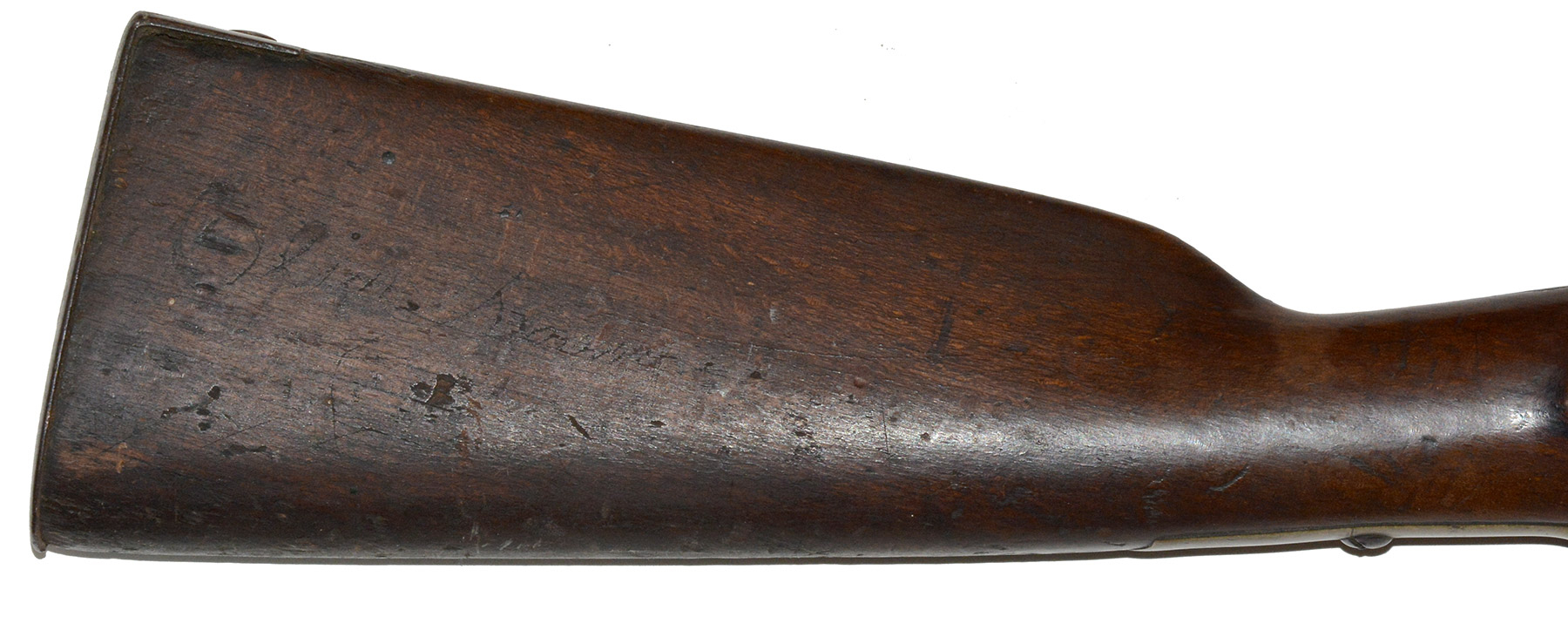
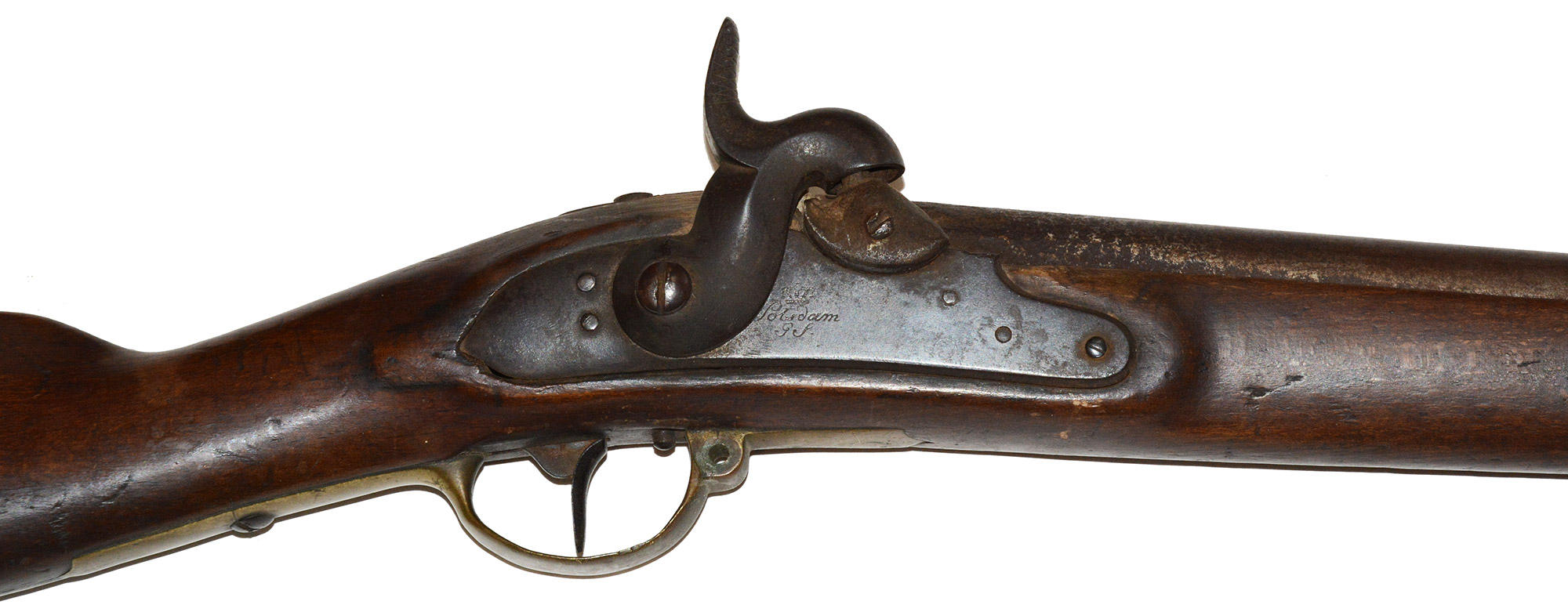
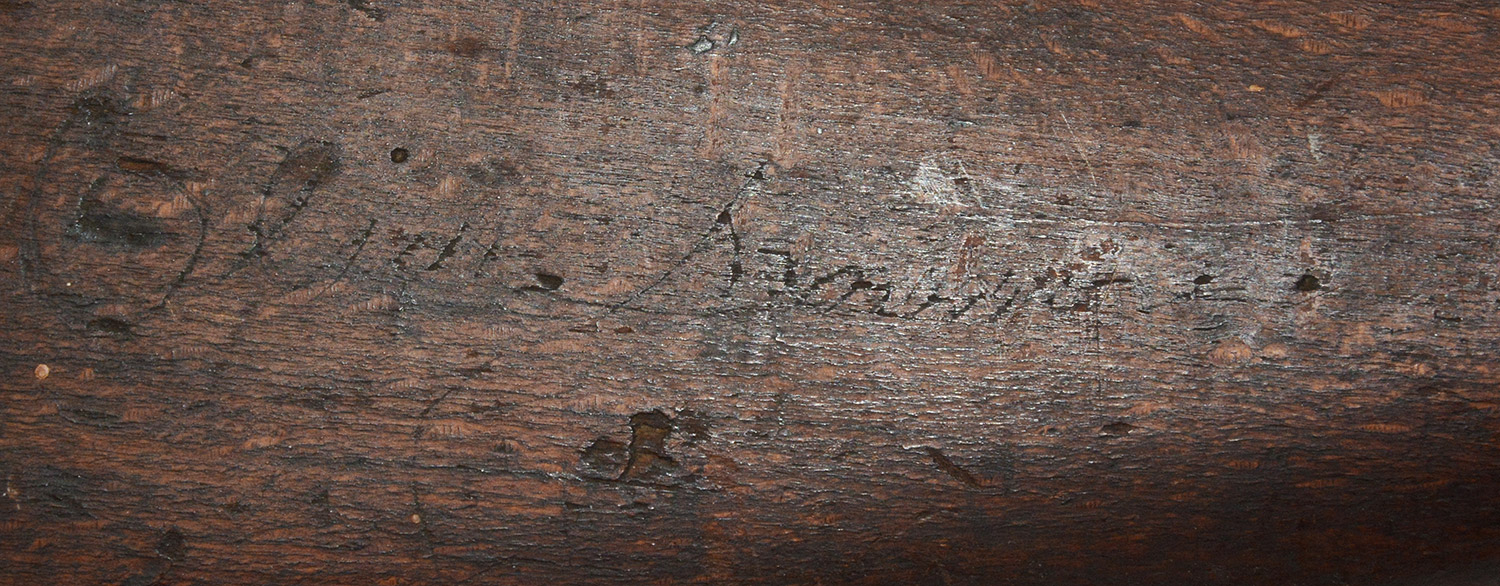
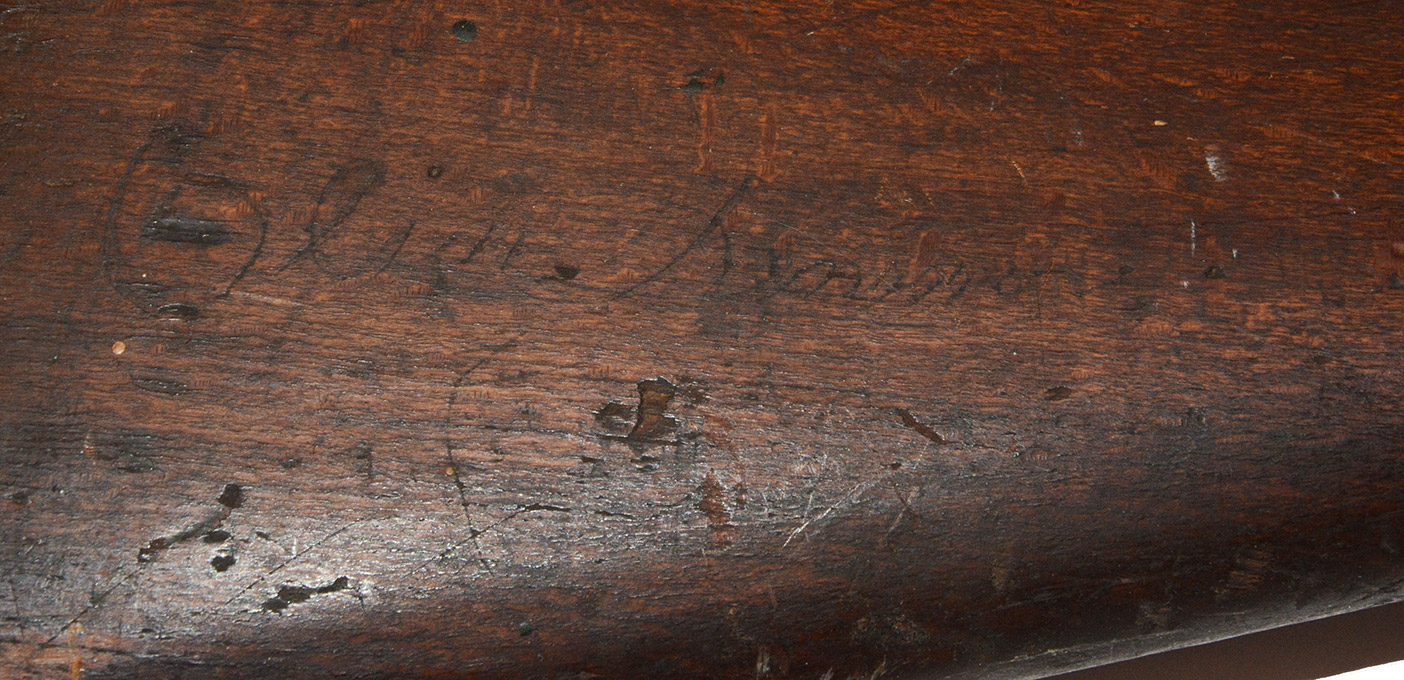

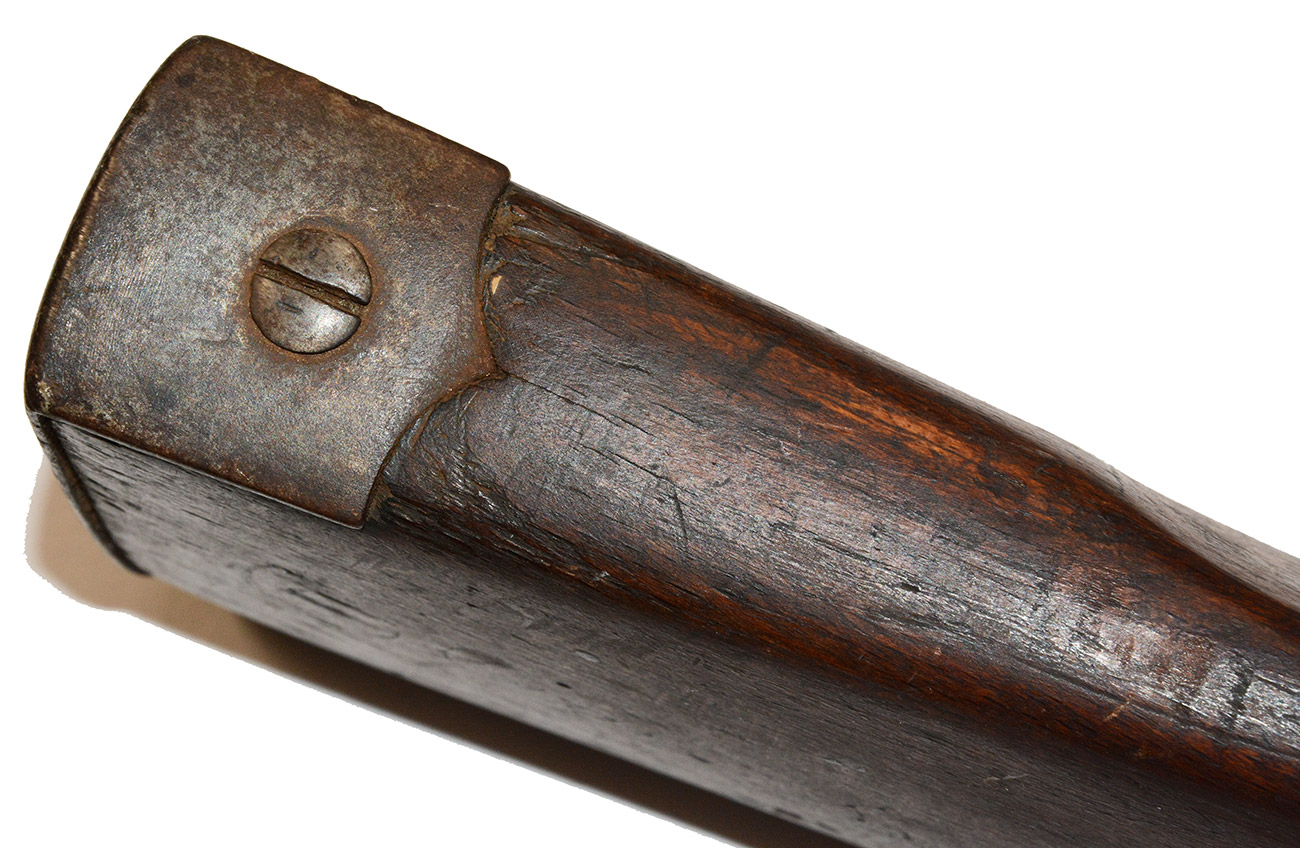
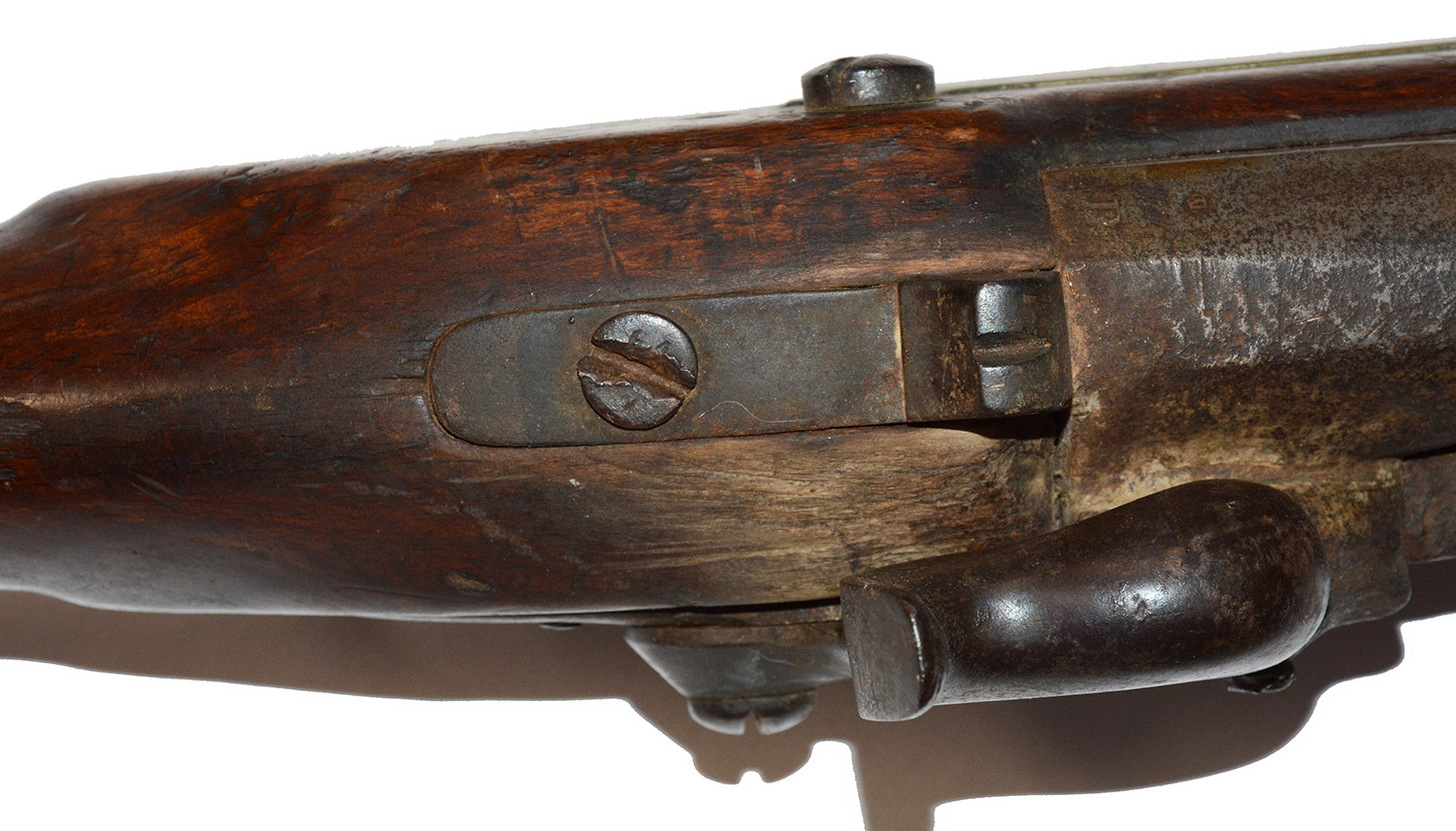
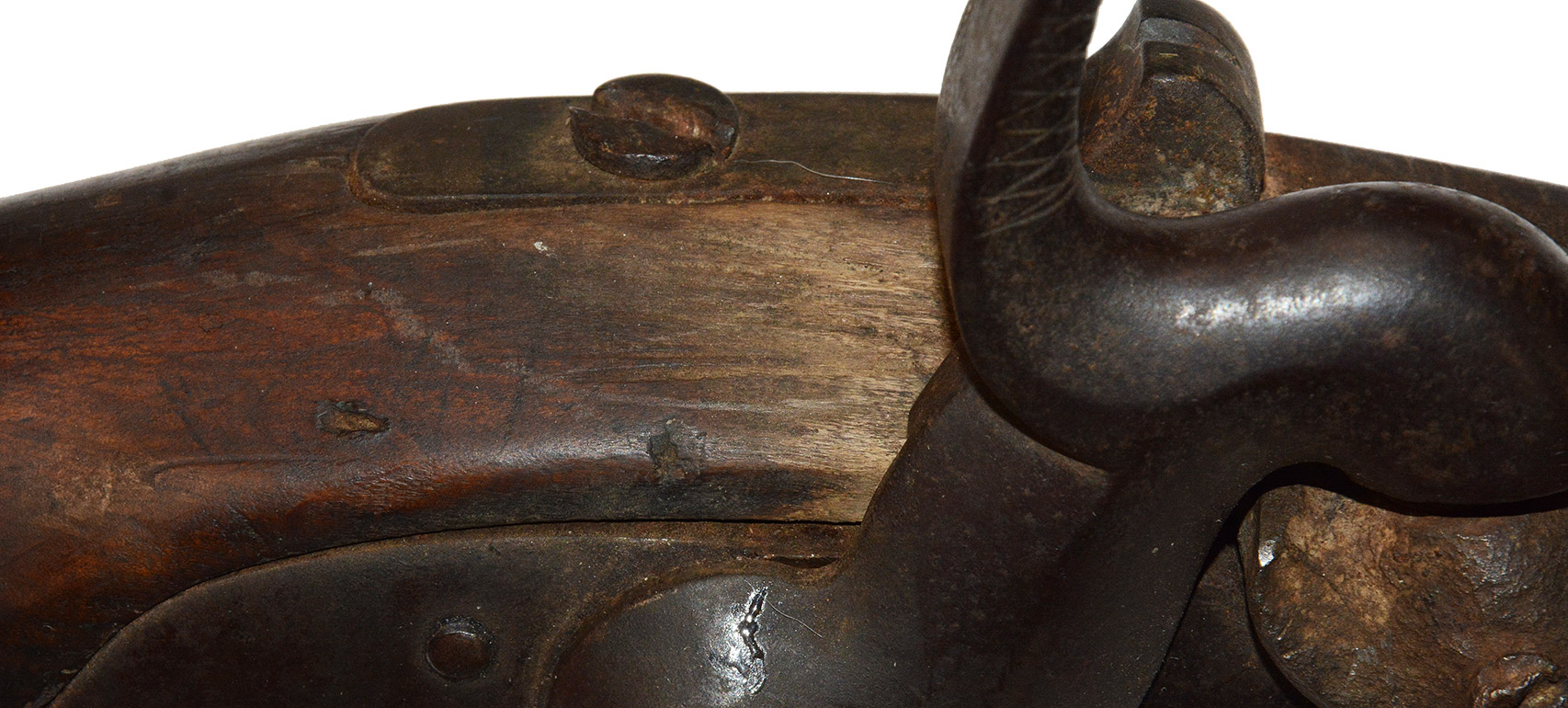
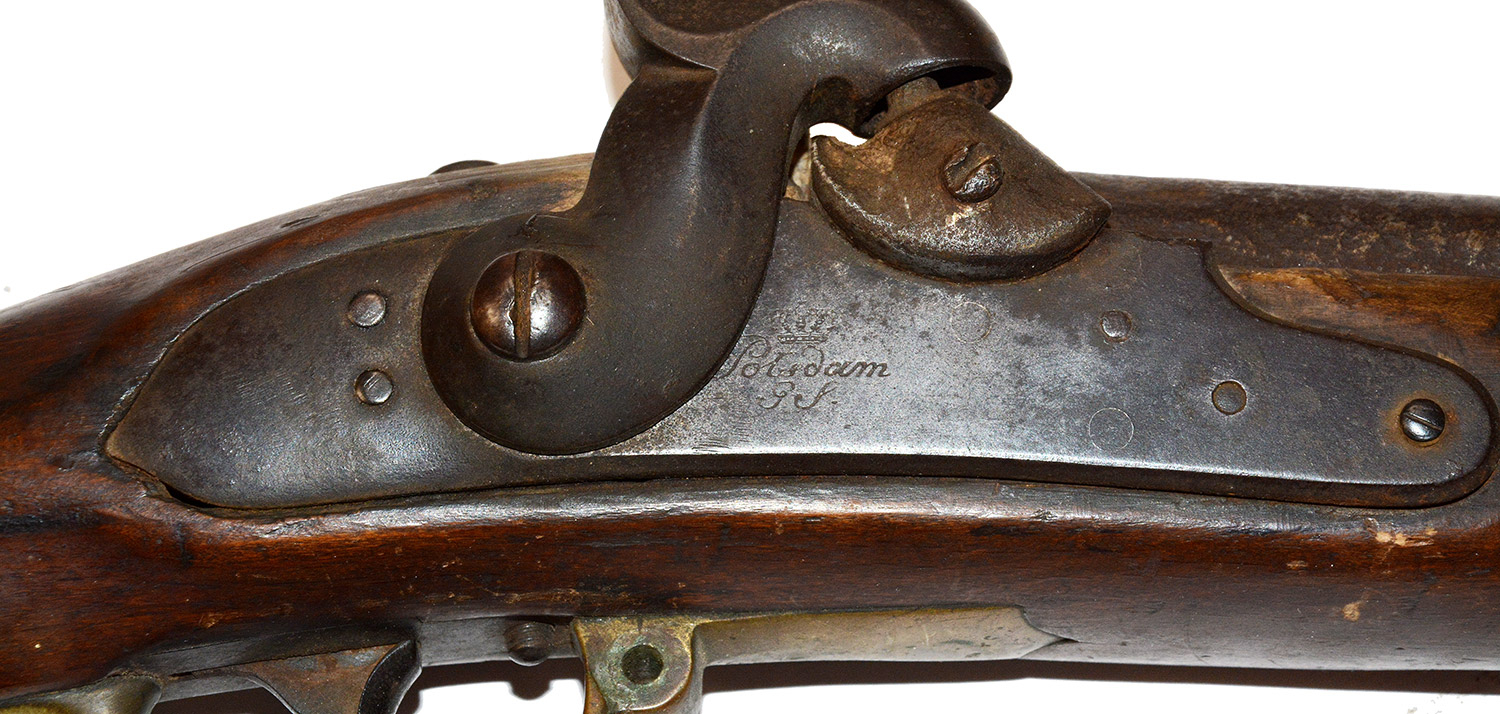
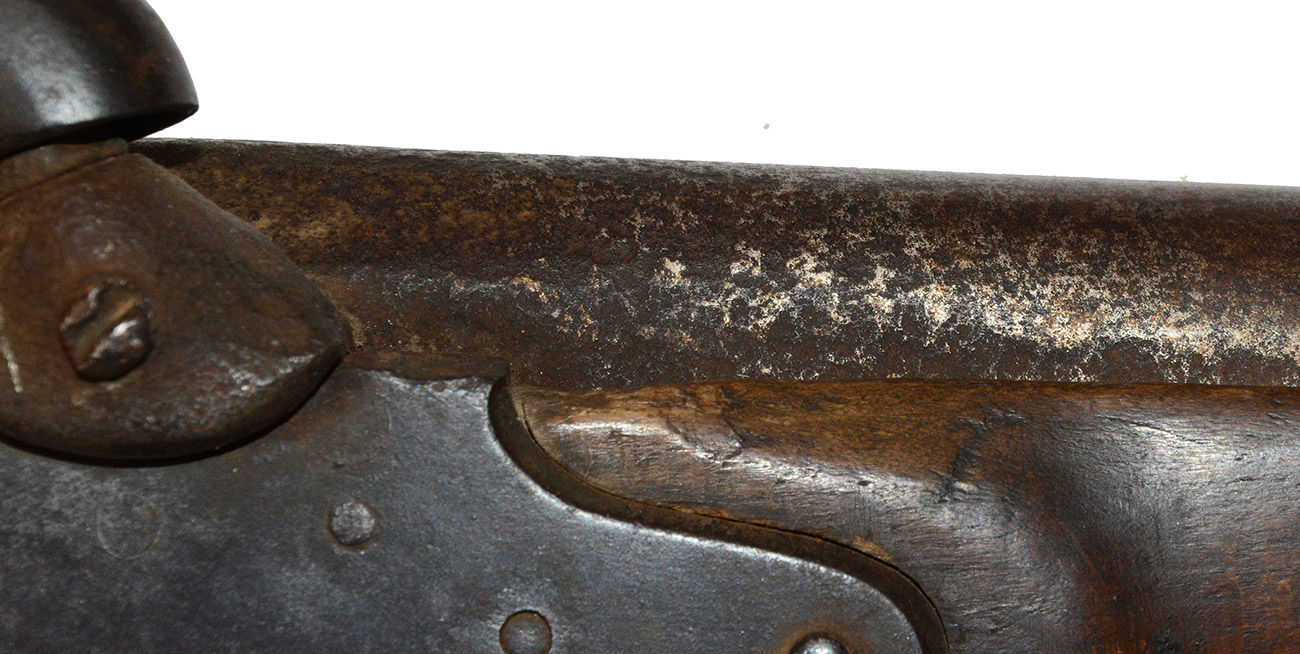
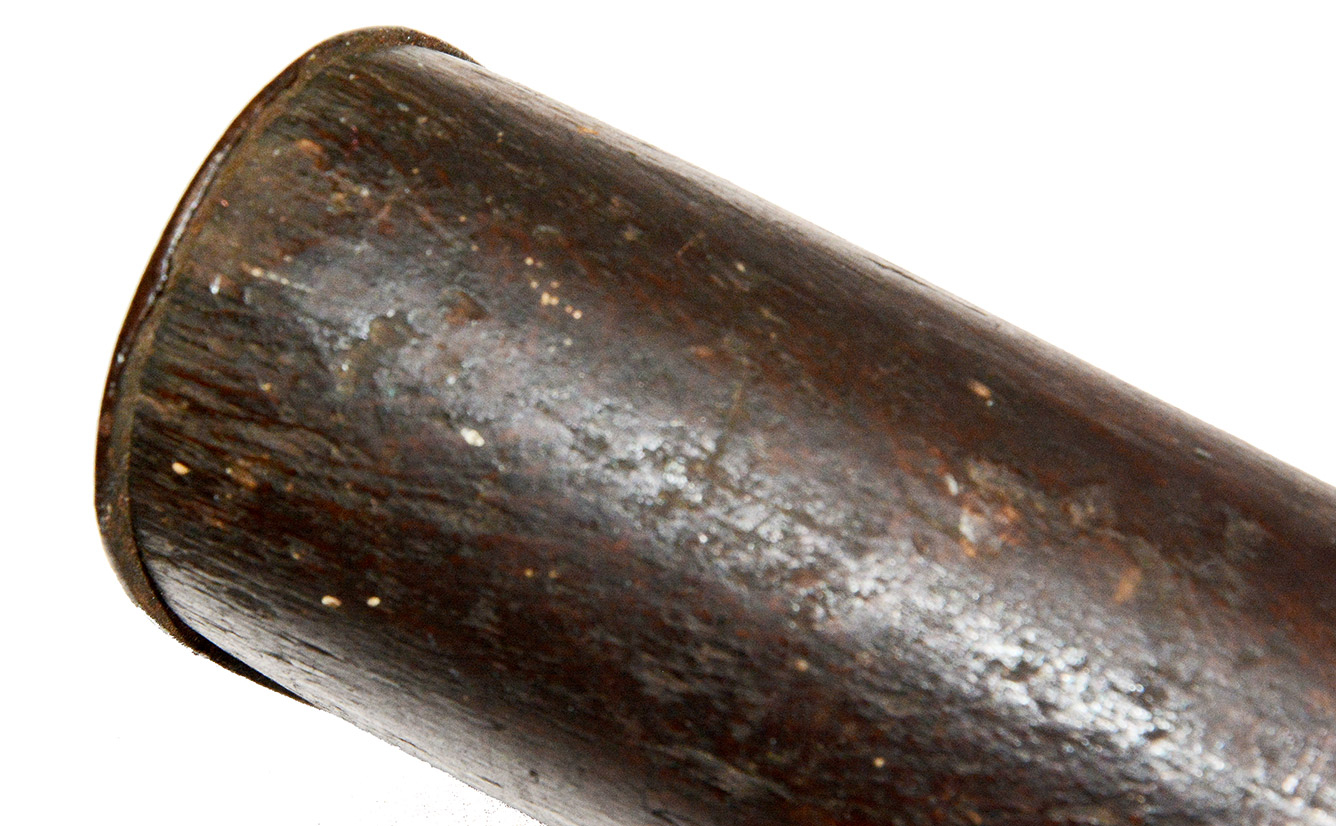


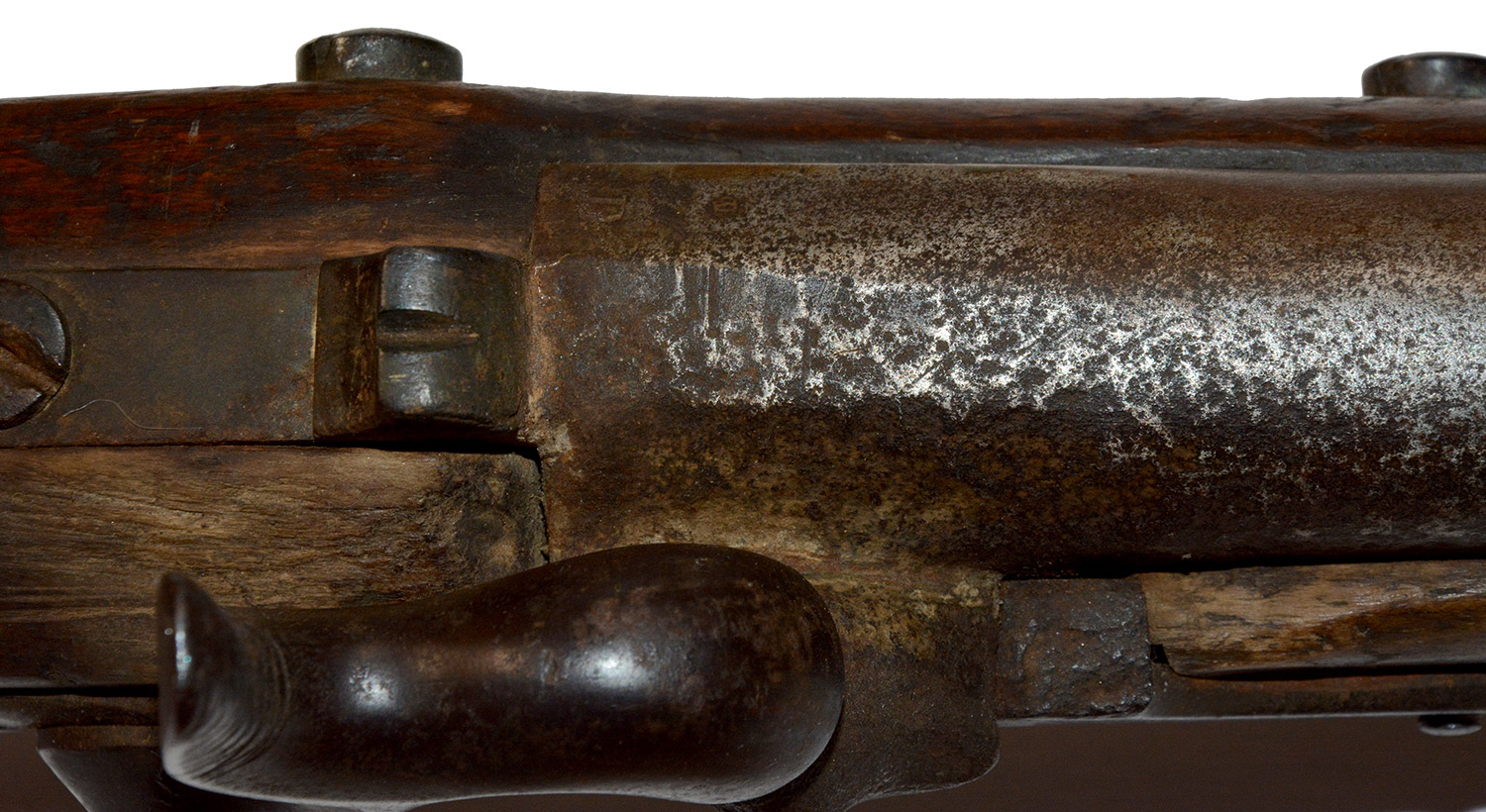
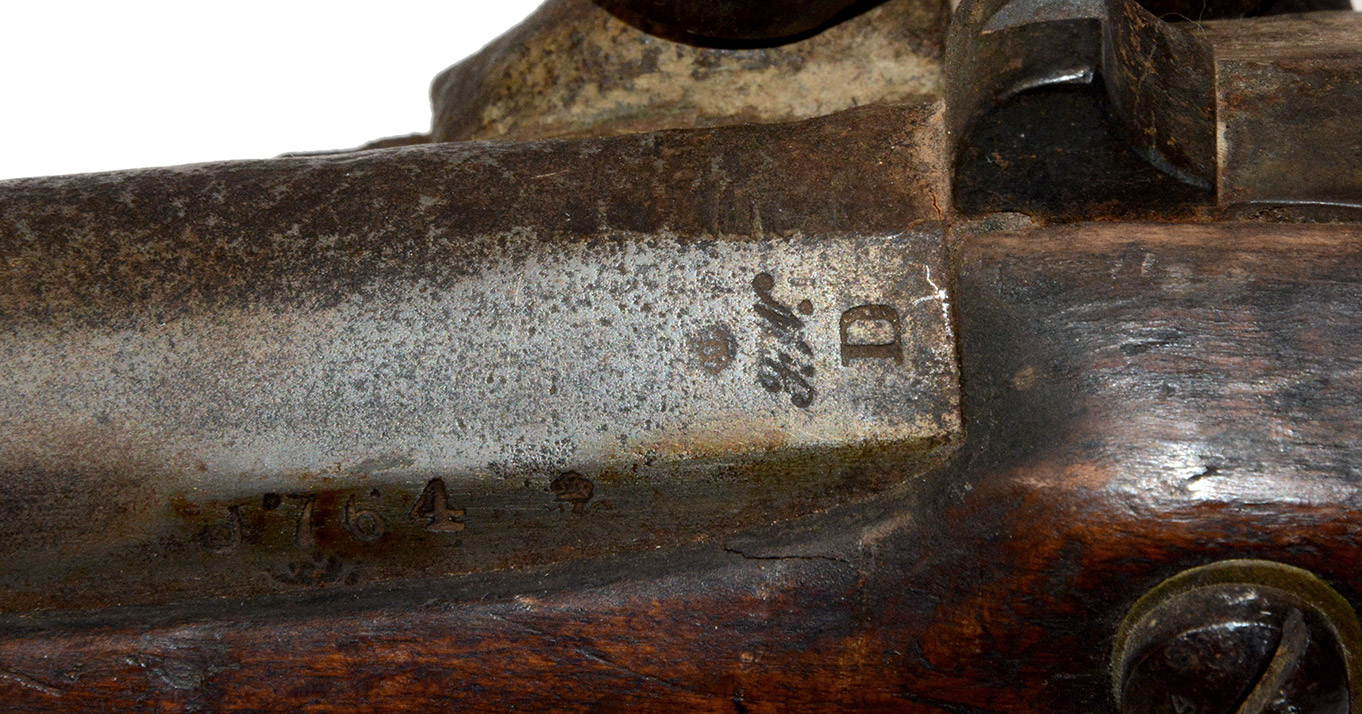
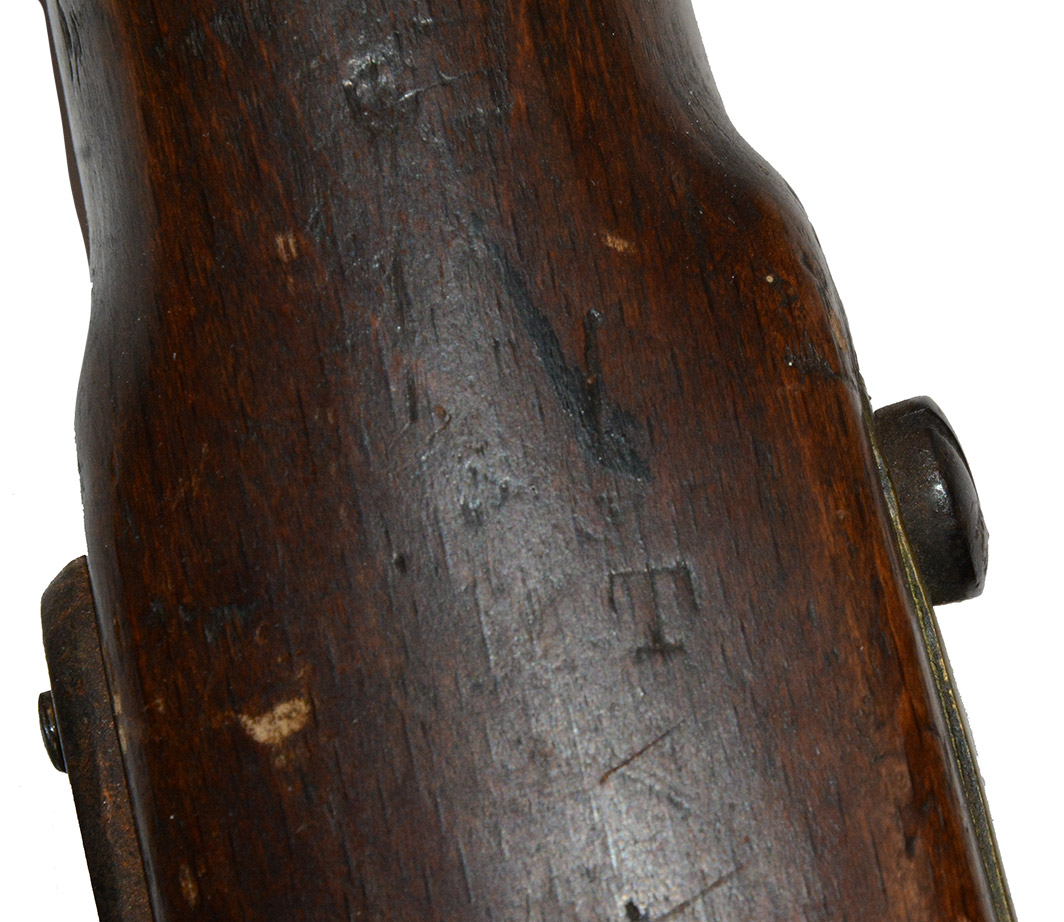
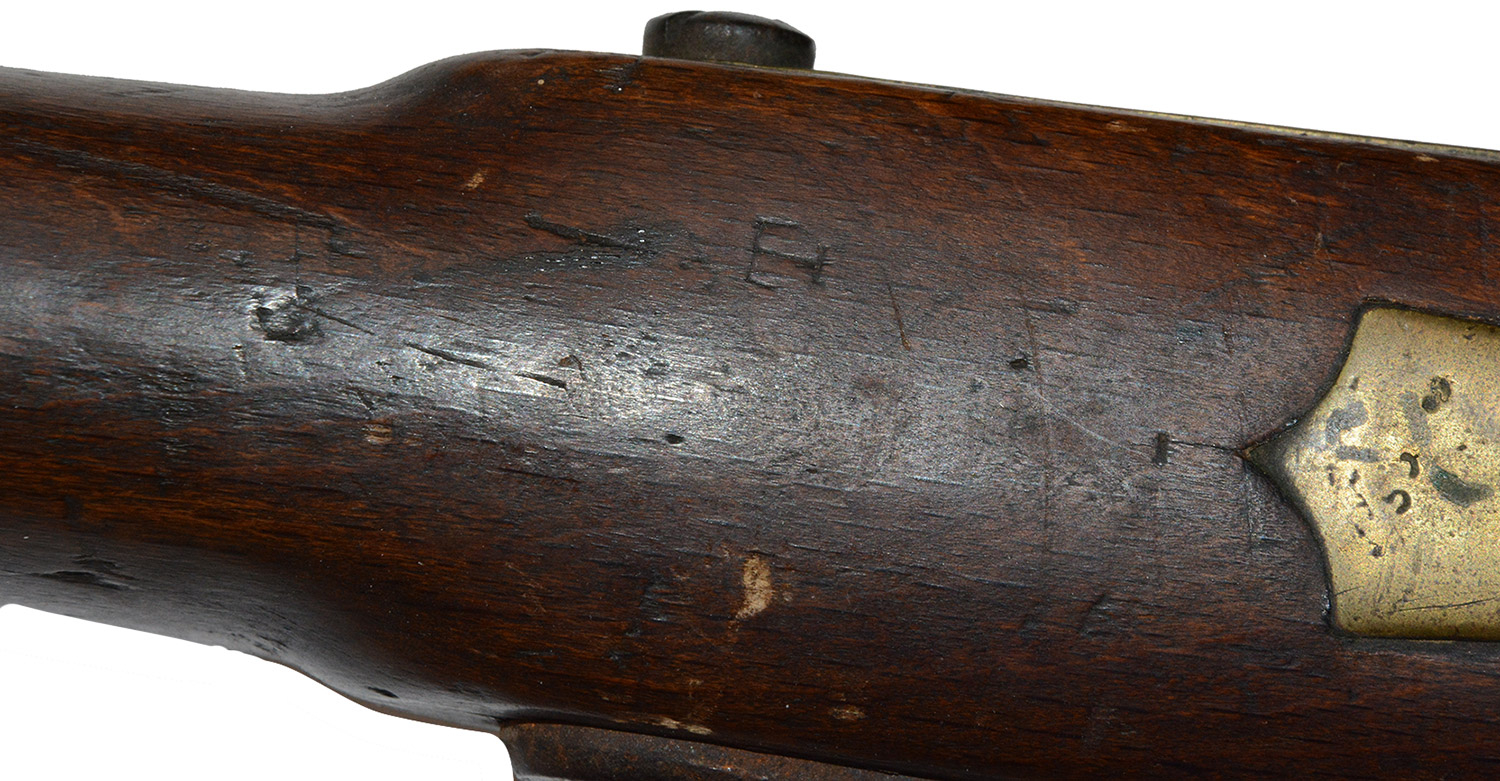
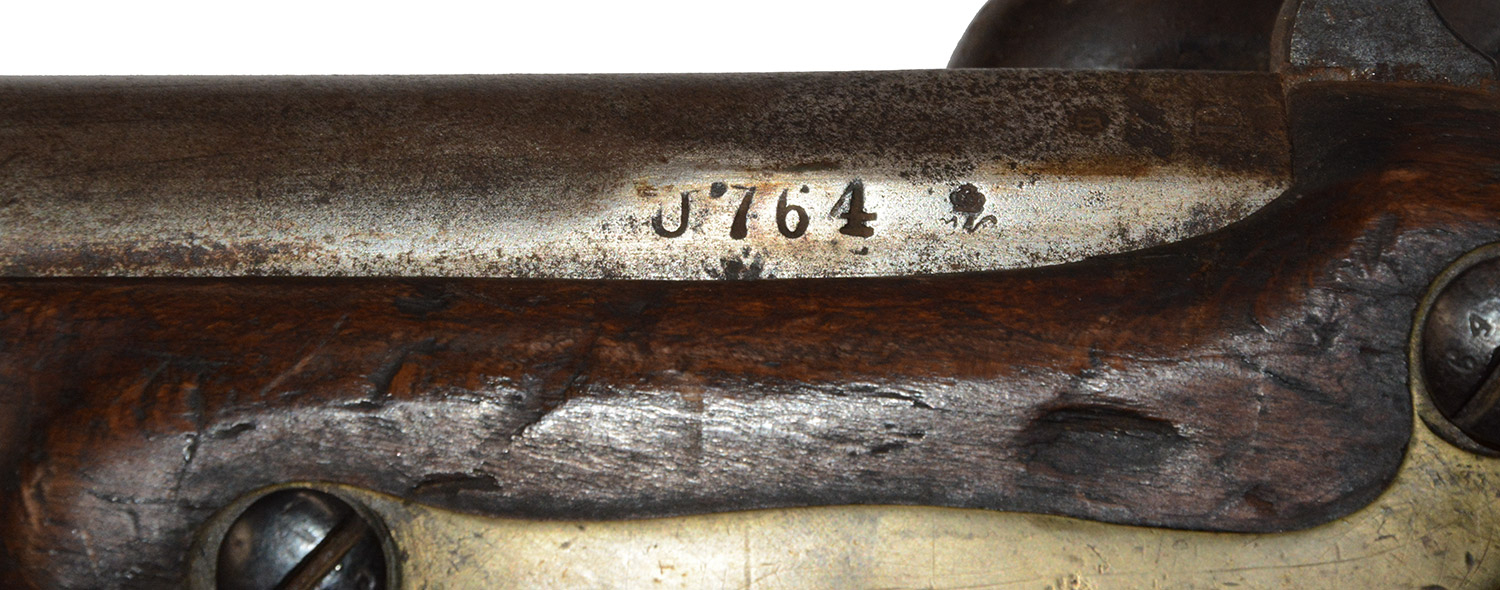
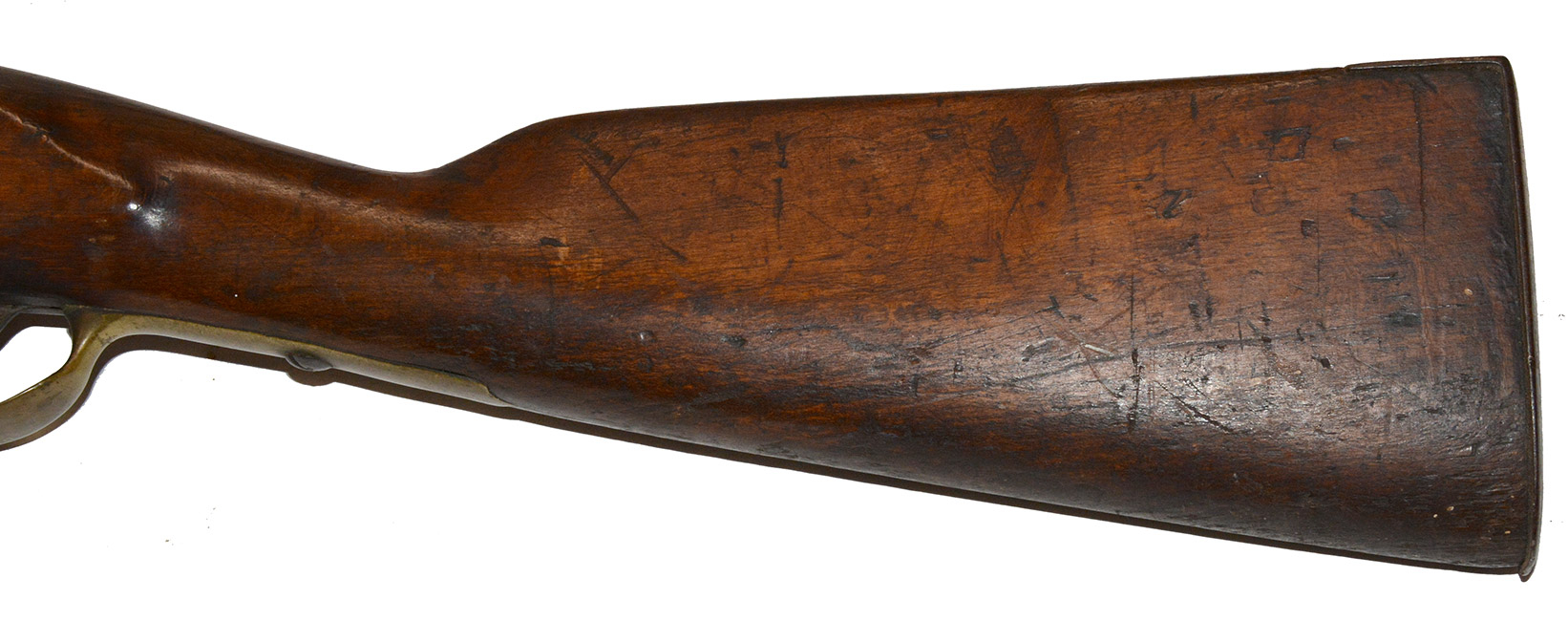
$2,395.00 SOLD
Quantity Available: None
Item Code: 490-2634
This shortened Prussian Model 1809 musket bears a “T” inspector’s stamp on the underside of the stock indicating it passed through the Confederate Ordnance cleaning and repair (C&R) system. This stamp is among the initial group of inspector stamps identified by Steve Knott in his groundbreaking book, “Captured and Collected: Confederate Reissued Firearms,” in which he estimates that some 200,000 arms captured or collected on battlefields and another 50,000 turned in by Confederate units went through the system to be cleaned or repaired. We are also aware of two other similarly shortened Prussian muskets with identifications to a South Carolina cavalry unit serving along the coast. Further, the wood under the hammer and behind the nipple shows burning and deterioration, and the metal forward shows heavy pitting, both typical on southern guns from the use of imported British “high pressure” percussion caps using a new, more powerful chemical mixture. These were produced in huge quantities between April 1861 and August 1864 when complaints from British soldiers forced their replacement.
The most recent study of European arms imported in the Civil War, by Schwalm and Hoffmann, indicates some 165,000 Prussian arms were sold to Union agents and arms dealers, more than half of which were likely these smooth bore .72 caliber Model 1809 muskets converted to percussion. Perhaps more interesting is the statement by one source, quoted by Schwalm and Hoffmann, that the Liege arms merchant Lemaire actually shipped to the Confederacy some 51,000 Prussian muskets, most or all of which were also converted Model 1809s, by November 1861, the only shipment of south of Prussian arms.
Whichever the intermediate source, this follows the standard configuration of the converted M1809 musket in the removal of the external flintlock elements, filling of resultant holes, and percussioning using a very heavy bolster and hammer. As is frequently the case also, the original brass butt plate was replaced with an iron one, but the brass triggerguard and side plate were retained. The musket shows the characteristic sunken cheek rest and the tall block sight on the breechplug. The lockplate markings are also typical, showing a crown, “Potsdam,” and “GS” for Gebruder Schickler, the proprietors of the factory.
In shortening it Confederate Ordnance reduced the .72 caliber barrel to 27 ¼ inches, very close to the 26 1/16 inch barrel of the .69 caliber U.S. Model 1847 cavalry musketoon, ending the stock just beyond what had been the middle band and omitting a nose cap, something also done on the M1847 US cavalry and artillery musketoons. The original rear block sight was left in place and a simple peg front sight was added to the front band, which was perfectly adequate for a large caliber smoothbore.
The gun still shows numerous original Prussian manufacture and unit markings- these were old model surplus muskets the Prussian were happy to get rid of to make room for more up to date weapons. There are also numerous small handling dings and scratches, but no significant chips or cracks. The mechanics are good and the ramrod is in place.
The study of the Confederate cleaning and repair system is still in its early stages, with much cataloging of inspector markings and guns that passed through the system yet to be done, but these arms provide an opportunity for those looking to acquire a real Confederate-used arm, and also those studying the south’s need for arms and the innovative and systematic ways they tried to compensate for the industrial superiority of the north. [sr] [ph:L]
DISCLAIMER: All firearms are sold as collector's items only - we do not accept responsibility as to the shooting safety or reliability of any antique firearm. All firearms are described as accurately as possible, given the restraints of a catalog listing length. We want satisfied customers & often "under" describe the weapons. Any city or state regulations regarding owning antique firearms are the responsibility of the purchaser. All firearms are "mechanically perfect" unless noted, but again, are NOT warranted as safe to fire!
~~~~~~~~~~~~~~~~~~~~~~~~~~~~~~~~~~~
THIS ITEM, AS WITH ALL OTHER ITEMS AVAILABLE ON OUR WEB SITE,
MAY BE PURCHASED THROUGH OUR LAYAWAY PROGRAM.
CLICK HERE FOR OUR POLICIES AND TERMS.
THANK YOU!
Inquire About CS CAPTURED AND COLLECTED POTSDAM MUSKET WITH POSSIBLE CS CAV USE
Most Popular
Historical Firearms Stolen From The National Civil War Museum In Harrisburg, Pa »
Theft From Gravesite Of Gen. John Reynolds »
Selection Of Unframed Prints By Don Troiani »
Fine Condition Brass Infantry Bugle Insignia »
Large English Bowie Knife With Sheath 1870’S – 1880’S »
Imported (Clauberg) Us Model 1860 Light Cavalry Officer's Saber »
featured item
LARGE FRAMED RELIC SHOWBOARD
This relic board is very like those assembled from Gettysburg relics by John Rosensteel and displayed on the porch of the Round Top Museum, but differs in displaying the relics on horizontal rather than raw vertical boards, in having a glass frame,… (1242-06). Learn More »


